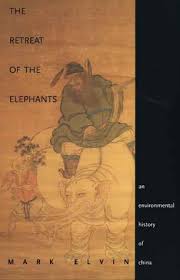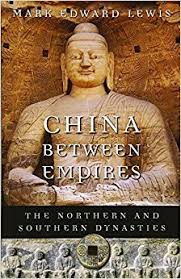
This cartoon cutout view is certainly one I would probably have unreflectively parroted in my teens. It seems erudite and counterintuitive. A classic, “well actually…” fact. But the more history I read, the less and less plausible I found the implications of the recent invention of nationalism. The nation-state as conceived between the Peace of Westphalia and the Congress of Vienna shapes and dictates modern understandings, but the sentiments and elements that come together to make the nation-state a powerful cultural phenomenon are quite old and widespread. Human tribalism emerges out of our innate cognitive architecture and is further selected through the process of cultural evolution. To some extent, this is extensible and scalable.

If you read History and Geography of Human Genes one of the peculiar results from the analyses within is that North Chinese cluster with Japanese, Koreans, etc., while South Chinese cluster with Southeast Asians. This did not turn out to be true. Most specifically, the South Chinese have a greater affinity for Southeast Asian groups (e.g., the Vietnamese Kinh) than North Chinese, but they are not closer to Southeast Asians than they are to North Chinese (the furthest southern dialect groups, such as those of Guangdong, are about equidistant to Vietnamese).
But what about the North Chinese? Are they simply Sinicized Mongols? It is clear that some of the North Chinese exhibit shifts toward West Eurasians. I think this is mostly through Mongols and Turks, who have a minor West Eurasian component. But, I believe that both North and South Chinese will be shown to have 50% or more of their ancestry attributable to people who founded the Erlitou culture of Henan. The Han exhibit signs in their genomes of massive demographic expansion in the Holocene. Some of the geographic variations we see today are due to differentiation driven by isolation by distance. Another proportion of it is through admixture with the substrate (e.g., the Yue have left a noticeable cultural imprint on parts of South China, and I suspect it’s a genetic impact as well). And finally, some of it is through admixture with newcomers. This is particularly true in China north of the Yangzi, which has been impacted by barbarian peoples since the rise of the Zhou and the interactions with the Rong and Di.
But China is too large, extensive, and long-lasting, to imagine it has a strong ethnic core with a genetic coherency in the way Finland has a strong Suomi core. Rather, genetics may more usefully be pointing to the powerful integrative and anti-centripetal forces at work across Chinese history. Hakka moved south, while southern families moved north again with the rise of the Sui-Tang. The 20th-century century has been characterized by the demographic Sinicization of Inner Mongolia and Manchuria, which had for most of Chinese history been outside of the domains of China proper.

Though Classical Greek civilization and culture has persisted in a form, to a great extent it was adopted, synthesized, and transmuted. The integration of Greek philosophy into Christian theology preserved Greek thought, but it also transformed its import and made it so that that cultural inheritance was not defining or exclusive to the Greeks. This is far less the case with Classical China. An intellectual in the year 1900 arguably expressed the living tradition which had its genesis during the Spring and Autumn Period. It is as if the Platonic Academy had maintained its institutional integrity for 2,000 years. Or, if the civilian Roman senatorial elite had not been dissolved between the 4th and 6th-century A.D., to eventually be replaced by illiterate barbarian warlords (there was a bridge period of barbarians who exhibited some of the best aspects of Romanitas).


The People’s Republic of China is not just an imagined community. It is an outgrowth of a political and social unit that has been evolving for 3,000 years.
Finally, I think at this point it is useful to end with a comparative exercise that compares the attitudes of the civilizations of the Eurasian oikumene to a very important and universal human phenomenon: religion. The “Greater West” (The West + Arab-Turkic-Persian Islam), India, and China, overlap and differ in very particular ways.
The Greater West has developed exclusive and socially universal religious confessionalization to a very great extent. Exclusive, insofar as on paper religious confessionalization is in its mature state is not about pluralistic competition, but the solidifying of a monopoly. Universal, in that the religious identity cuts across class and ethnicity in a very cohesive fashion.
Modern India, and to some extent premodern India, seems to have developed strong confessional identities which are somewhat exclusive. Or have become so. People die because they are Muslim or Hindu, and the boundaries are sharp and stark. But, Indian society is not so universalizing. Within Hinduism, the Sanata Dharma, there are a wide range of practices and beliefs. Buddhism is part of this broader tradition and has engaged in confessionalization and universalizing very early on. But, like Hinduism, it tends not to seek exclusive monopoly on society.
Finally, we have the situation in China. Though “world religions” have been prominent historically, the Chinese do not develop exclusive or socially universal attachments. A single religion does not bind society together, and individuals can “consume” religious services and beliefs from a wide array of systems. It is sometimes said that in East Asia religion is unimportant. This is false. Rather, religion is not homogeneous or monopolistic. And often confessional identities are weak.
I bring this up because though there are deep human universals, there are also striking cultural differences. Indians often scoff at the Chinese tendency to convert to Christianity in the West, suggesting that perhaps the Chinese lack cultural pride. This is a false inference because the issue that Indians do not understand is that Chinese society does not tie itself to a strong confessional religious identity. Chinese identity at the core does not have to do with supernatural belief systems. Similarly, Westerners are often perplexed by the open-minded latitudinarianism of many Hindus. But Westerners do not internalize that Hindu religious beliefs are less about individual identity and more about collective communal customs and ties. Undergirded often by a monistic metaphysical system, Indians see little need to convert the world to become like themselves, because even within India communal diversity is the norm, and universalizing tendencies in religion has been marginal until lately.
We’re going into an interesting century. Whether that’s good or bad, I’ll leave to you.






 The most important thing about this preprint is not that the sample size is large enough that they could detect low frequency variants and add to the catalog. No, for me, it is that they sampled so many of the provinces. As you can see in the figure up top just like Europe China’s Han population recapitulate the map of China. That is, populations arrange themselves spatially when projected onto a principle components analysis plot in the same manner that they do geographically. This is a new finding in some ways because previous sampling strategies had not been robust enough to detect the east-west cline (though to be honest if you looked at the Chinese samples in the 1000 Genomes there was suggestion of this).
The most important thing about this preprint is not that the sample size is large enough that they could detect low frequency variants and add to the catalog. No, for me, it is that they sampled so many of the provinces. As you can see in the figure up top just like Europe China’s Han population recapitulate the map of China. That is, populations arrange themselves spatially when projected onto a principle components analysis plot in the same manner that they do geographically. This is a new finding in some ways because previous sampling strategies had not been robust enough to detect the east-west cline (though to be honest if you looked at the Chinese samples in the 1000 Genomes there was suggestion of this).







